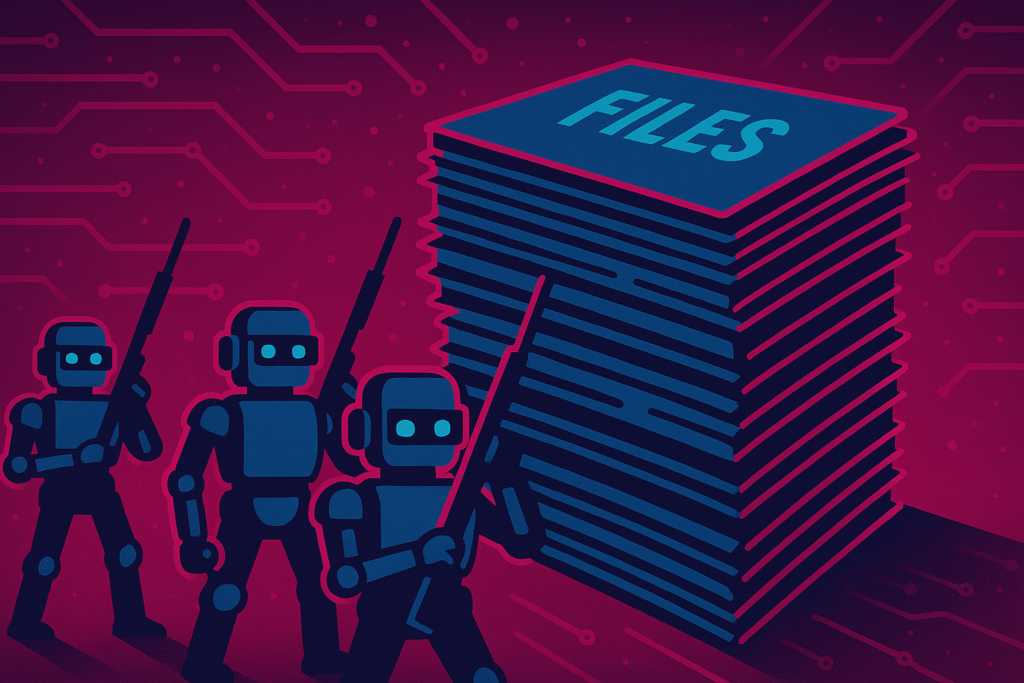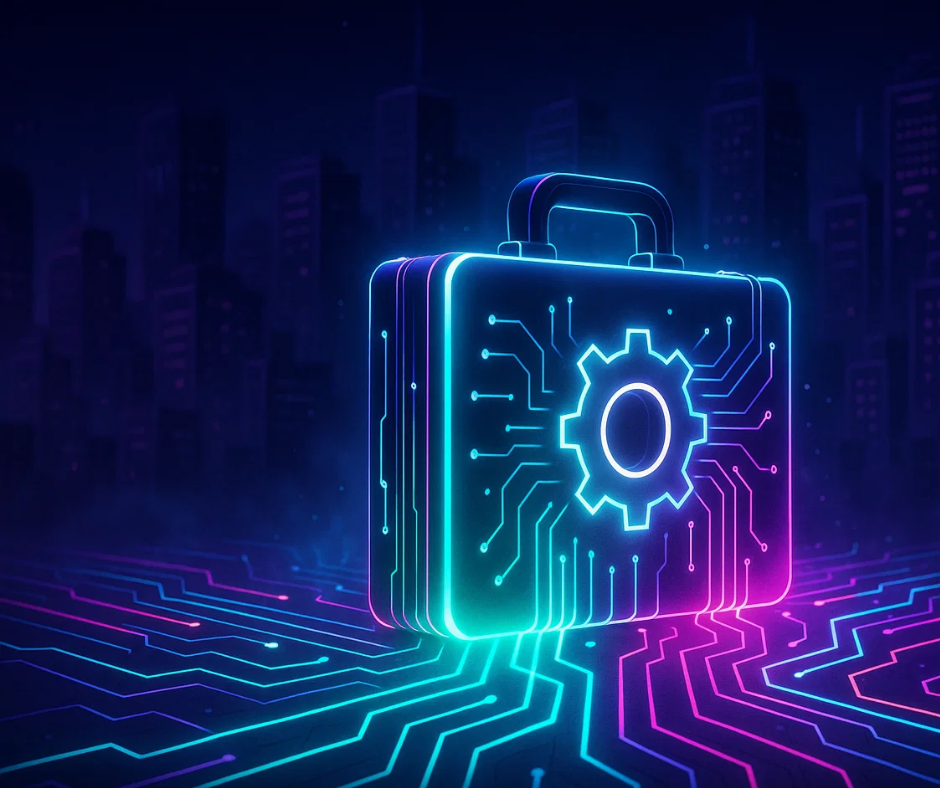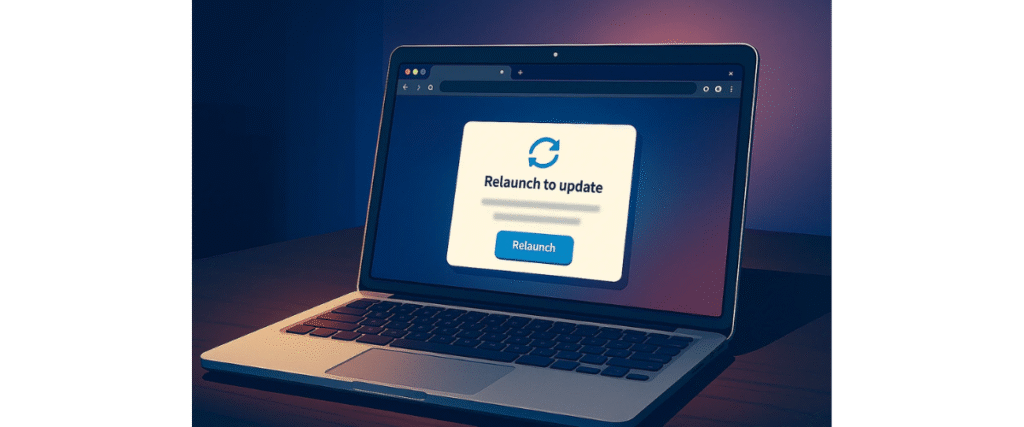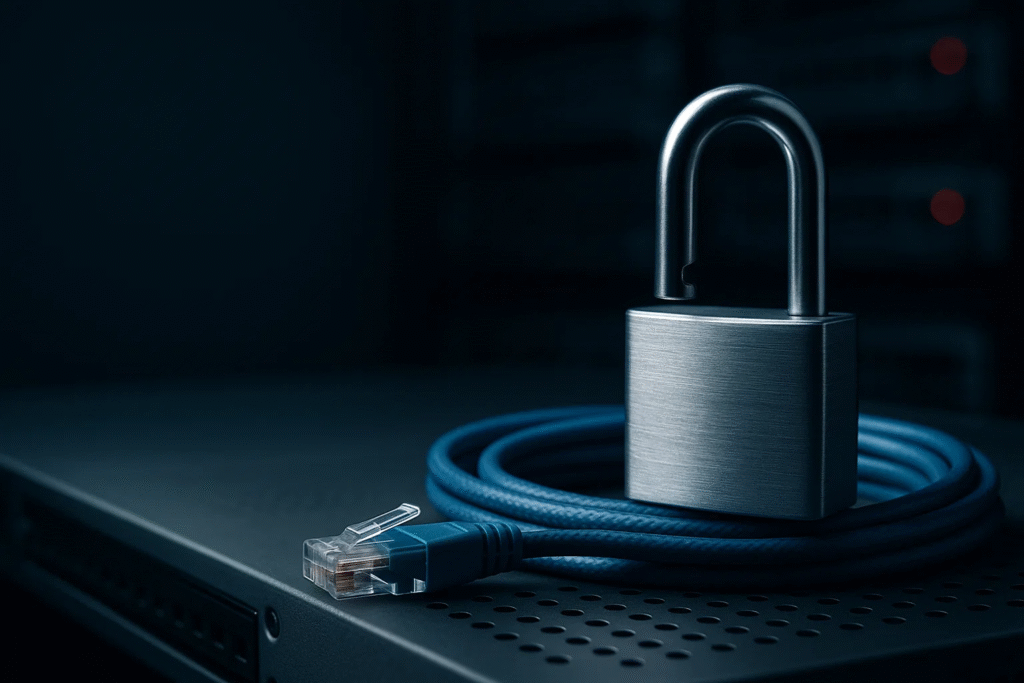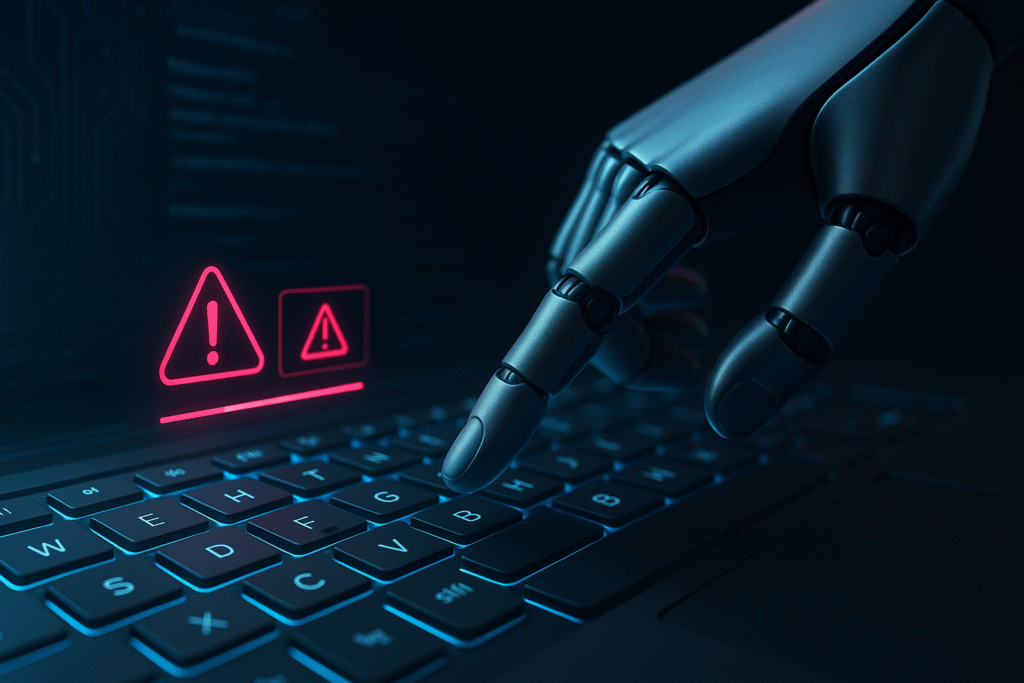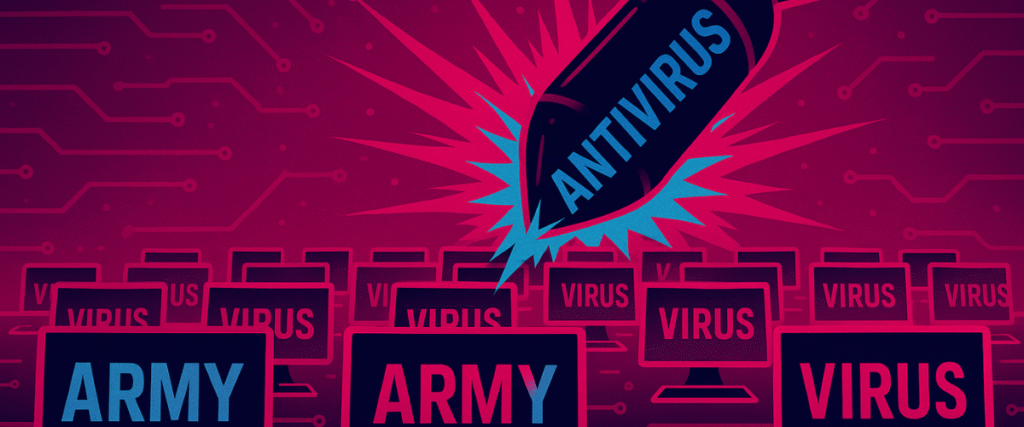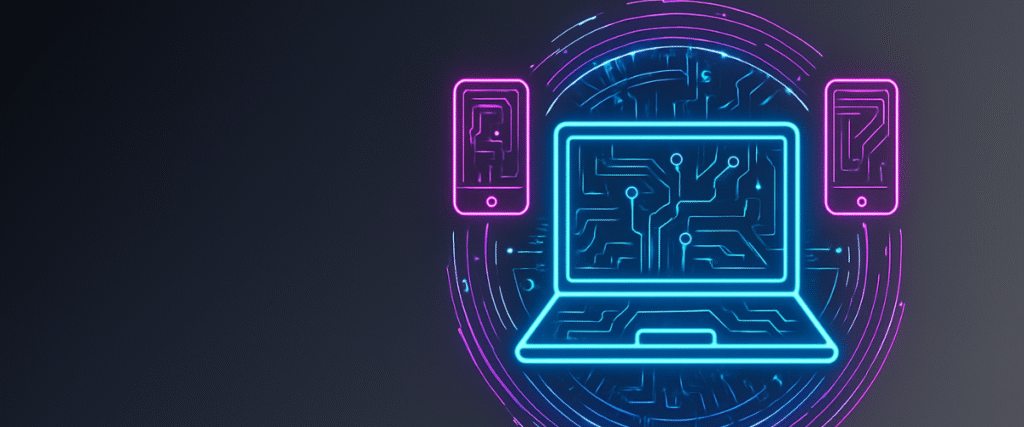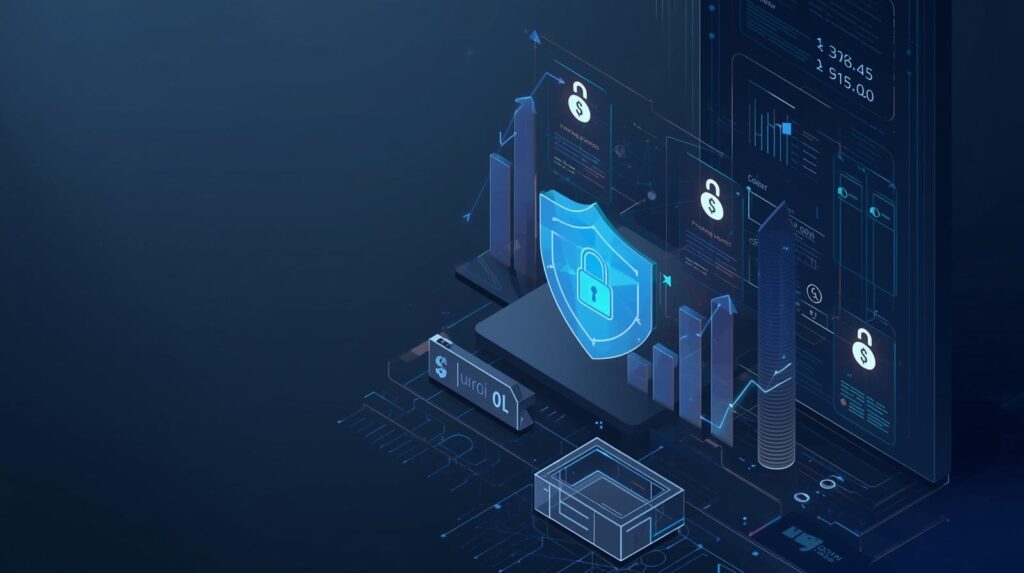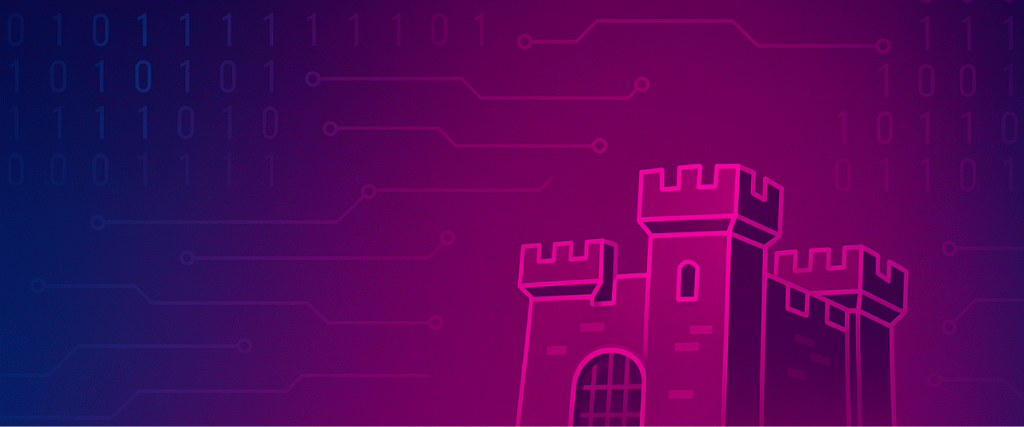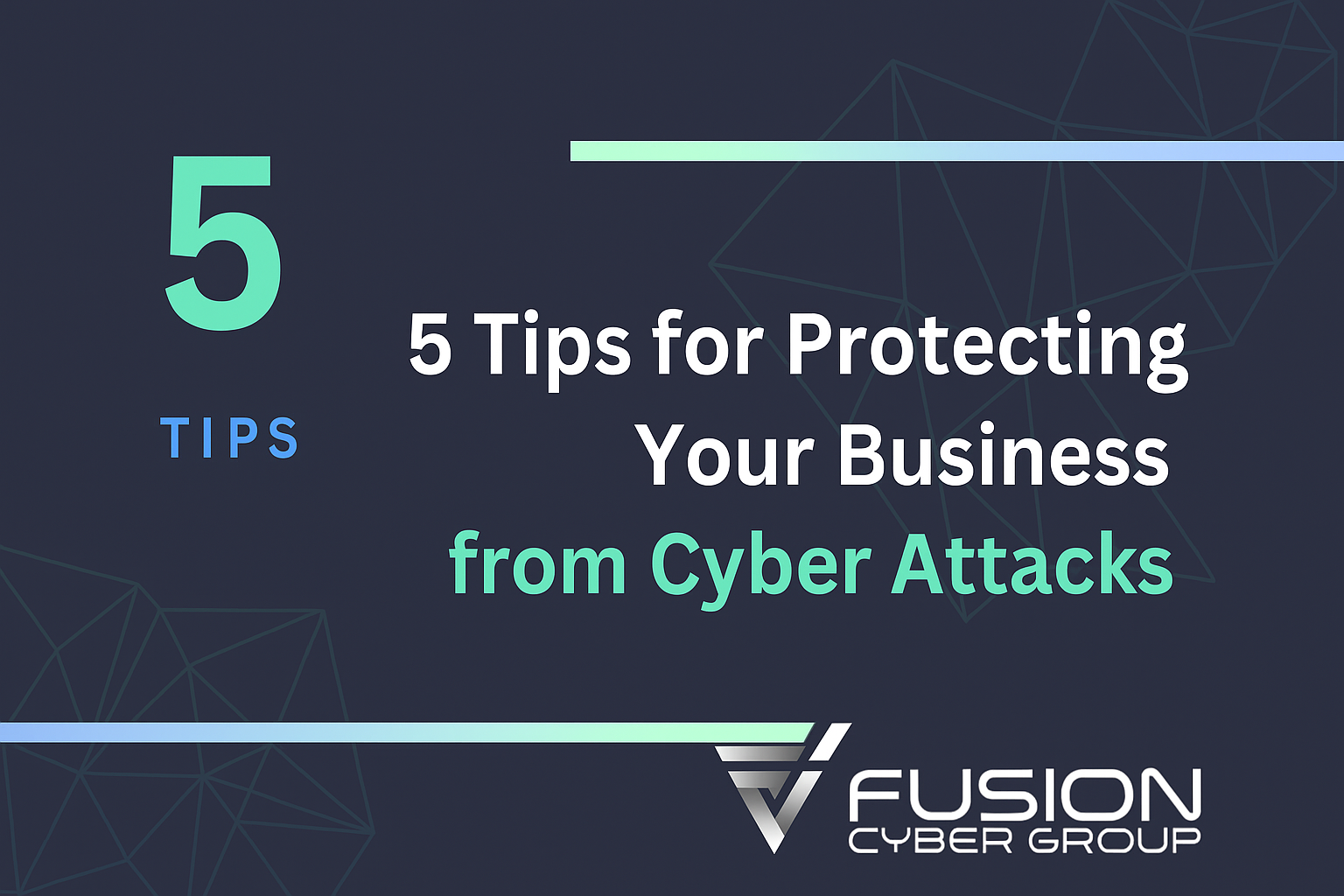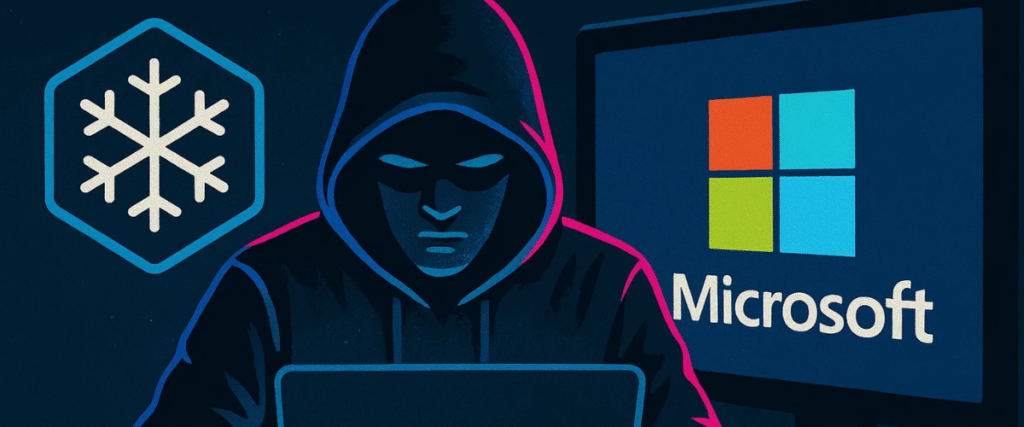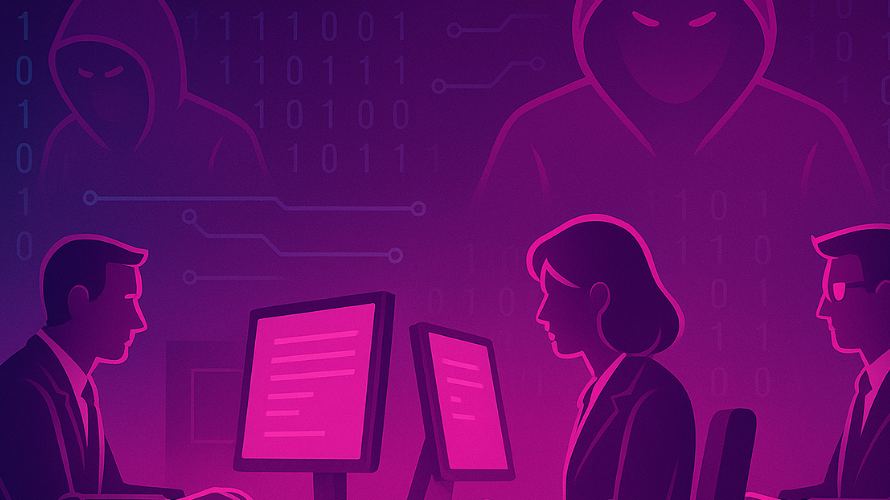
Defend Like a Professional — Every Layer Counts
Cyberattacks strike at every level of your systems—from apps to physical networks. One weak link is all it takes.
Don’t give attackers the opening. Talk to a FusionCyber expert and secure your defenses today.
Why Layered Security Matters
Modern cyberattacks rarely stop at the perimeter. Attackers test every layer of your infrastructure, from the applications your staff use daily to the hardware sitting in your server room. If one layer is weak, it becomes the entry point for exploitation.
For small and medium-sized businesses (SMBs), this is especially concerning. Most rely on a mix of on-premise tools, SaaS apps, and cloud services. That complexity increases the chances of overlooked vulnerabilities. Criminals don’t need to invent new tactics; they exploit simple gaps like unpatched software, weak credentials, or unmonitored traffic.
The business impact goes far beyond the technical issue. Breaches cause downtime, reputational loss, regulatory fines, and even lawsuits. IBM’s 2023 Cost of a Data Breach report puts the average global cloud-related breach at CAD $6 million. For SMBs, even a small-scale incident can disrupt operations or force closure.
Layered security—defence in depth—is the only practical answer. Each level of protection backs up the others. Even if an attacker gets past one barrier, another is there to stop them. It’s not just about technology; people, processes, and governance must also be aligned to close gaps.
What separates professional security from reactive measures is preparation. A mature posture anticipates how an attack will move through each layer, planning ahead to detect and stop it before real damage occurs. For business leaders, the lesson is clear: cybersecurity is no longer an IT expense—it’s a business enabler that safeguards continuity, compliance, and customer trust.
Just as importantly, layered security positions a business as trustworthy in the eyes of partners, regulators, and customers. Demonstrating strong controls across all layers builds credibility, improves vendor relationships, and creates competitive advantage. In industries like healthcare, finance, or legal services, that trust is not just valuable—it is essential to winning and keeping clients.
Another factor leaders must consider is the evolving regulatory landscape. Governments worldwide, including Canada with Québec’s Law 25, are tightening rules around data security, breach notification, and accountability. Non-compliance doesn’t just mean fines; it can also lead to investigations, lawsuits, and reputational damage that lingers long after a breach is contained. For SMBs with limited resources, meeting these obligations is already challenging without a proactive security strategy.
Attackers also recognize that smaller organizations often underestimate their risk. They assume cybercriminals prefer larger enterprises, yet SMBs are attractive precisely because their defences are weaker. Automated tools scan the internet continuously for exposed systems, misconfigured cloud services, and leaked credentials. This means even businesses outside high-profile sectors are at risk.
Ultimately, layered security offers resilience. It creates multiple checkpoints where attacks can be detected, delayed, or stopped. This layered resilience transforms cybersecurity from a cost centre into a competitive advantage.
Application Layer – Exploits
Applications are where business happens. Customer portals, email platforms, finance systems, and SaaS tools all run here. Unfortunately, this makes the Application Layer one of the most targeted. Vulnerabilities such as SQL injection, cross-site scripting, and remote code execution allow criminals to directly manipulate how software handles data.
For example, a vulnerable content management system can be exploited to deliver malware to visitors. An unpatched HR platform might leak employee records. Even downtime caused by a crashed application can stop sales or service delivery. These aren’t theoretical threats—exploits like Log4Shell in 2021 showed how one flaw can ripple across industries, exposing millions of systems.
How to Defend:
- Regular updates and patches: Attackers often exploit known flaws. A disciplined patching schedule closes those gaps.
- Strong authentication: Passwords alone are not enough. Multi-factor authentication (MFA) adds a layer attackers can’t bypass with stolen credentials.
- Application security testing: Vulnerability scans, penetration tests, and DevSecOps pipelines catch weaknesses before attackers do.
- Least-privilege access: Users should only access what they need. This reduces the impact if an account is compromised.
Beyond technical measures, accountability is critical. Who in your organization owns application security? Without defined roles, patches get delayed, reviews get missed, and responsibility falls through the cracks. Professional defence also means tracking dependencies—third-party plug-ins, open-source components, and APIs that may introduce hidden vulnerabilities.
Business Outcome: Securing applications protects the integrity of customer-facing services, ensures compliance with privacy laws like Québec’s Law 25, and prevents costly disruptions. For SMBs, getting this layer right often means the difference between smooth growth and an avoidable crisis. Strong application defences also open doors to new markets and partnerships, as clients increasingly demand evidence of secure systems before doing business.
The strategic value here is clear: application security doesn’t just block attacks, it enables innovation. When developers can release new features confidently, with testing and safeguards in place, businesses can move faster without fear that speed will create openings for attackers. In competitive markets, this balance of agility and security is a major advantage.rships, as clients increasingly demand evidence of secure systems before doing business. crisis.
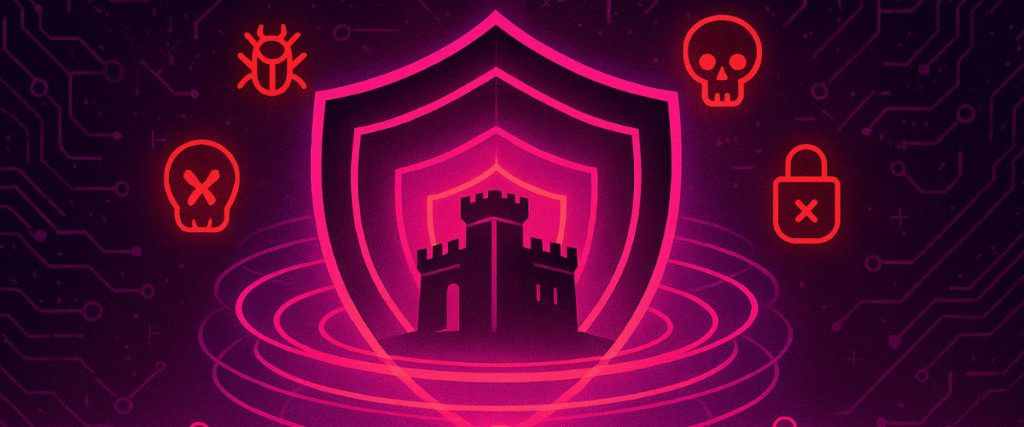
Presentation Layer – Phishing
Phishing attacks exploit the human element. Criminals disguise emails or websites to trick employees into giving up credentials, downloading malware, or transferring money. It’s low cost, scalable, and remains the single most common cause of breaches.
A phishing email may look like an urgent invoice, a password reset notice, or even an internal memo. If one employee clicks, attackers can gain a foothold into systems, launch ransomware, or conduct business email compromise scams. Attackers continually refine these tactics with AI-driven language models and cloned websites that appear indistinguishable from the real thing.
How to Defend:
- Advanced email filtering: Modern filters use AI to block suspicious content before it reaches inboxes.
- User awareness training: Staff must learn to spot phishing attempts. Simulated phishing campaigns reinforce vigilance.
- MFA enforcement: Even if attackers steal credentials, MFA stops them from logging in.
Phishing defences work best when layered. Training raises awareness, filters reduce exposure, and MFA blocks successful credential theft. Together, these reduce the risk of financial fraud, ransomware outbreaks, and reputational damage.
Executives should also recognize phishing as a governance issue. Policies around payment approvals, vendor communication, and escalation procedures are just as important as technical controls. Criminals rely on urgency and authority to trick employees; strong business processes break that chain of exploitation.
Business Outcome: By investing in phishing defence, organizations build resilience into both their technology and culture. Clients and regulators increasingly expect proof that companies are managing this risk—proactive measures can strengthen compliance, safeguard revenue, and preserve trust. Over time, building a “culture of caution” ensures staff act as sensors, flagging suspicious activity before it escalates into something larger. A well-trained workforce becomes not a liability but a true extension of the security team.
Session Layer – Hijacking
The Session Layer manages ongoing communication between users and applications. Attackers target it through “session hijacking”—stealing or intercepting session tokens that verify a user is logged in. Once hijacked, attackers can impersonate legitimate users without needing a password.
Methods include cross-site scripting, insecure cookies, or capturing unencrypted traffic. Once inside, criminals can move laterally across systems, approve fraudulent transactions, or extract sensitive data. These attacks are particularly dangerous because they often bypass traditional monitoring. To the system, the activity looks like it’s coming from an authenticated user.
How to Defend:
- Encrypted traffic: Always use HTTPS/TLS to protect data in transit.
- Secure, expiring tokens: Tokens should be short-lived, rotated frequently, and invalidated after logout or inactivity.
- Access controls: Limit privileges so that even if a session is hijacked, attackers can’t escalate.
- Continuous monitoring: Track unusual patterns like logins from different regions within minutes of each other.
Business leaders should view session security as a trust issue. Customers and employees alike expect their sessions to be private and tamper-proof. A hijacked session leading to fraud or data loss damages confidence more quickly than a technical outage.
Business Outcome: Protecting sessions prevents silent account takeovers, fraudulent actions, and reputation loss. Strong governance around session management shows regulators and clients that your business is serious about safeguarding identity and data. Investing here also reduces legal liability, since session hijacking often results in personal data exposure, which must be reported under Law 25. In practice, robust session security means your digital services remain safe for transactions, collaboration, and customer engagement—without fear that attackers are silently watching or manipulating them.

Transport & Network Layers – Reconnaissance and MitM
At the Transport Layer, attackers conduct reconnaissance—probing communication channels for weaknesses. At the Network Layer, they escalate to Man-in-the-Middle (MitM) attacks, intercepting and sometimes altering communications. Both tactics are highly effective because they allow adversaries to gather information quietly before launching a more damaging intrusion.
Reconnaissance helps criminals map your environment, identifying weak protocols, outdated encryption, or open ports. With this knowledge, attackers know exactly where to strike. Once weaknesses are discovered, MitM attacks take advantage by slipping between two legitimate parties. From there, attackers can silently monitor traffic, steal login details, or even inject false information into conversations or transactions. The result is not just stolen data—it could mean altered purchase orders, manipulated financial records, or sabotaged intellectual property.
How to Defend:
- Encryption everywhere: TLS, VPNs, and secure protocols like SSH protect data integrity and confidentiality.
- Intrusion detection and prevention systems (IDS/IPS): Spot suspicious scans and block them early.
- Digital signatures: Ensure communications cannot be tampered with unnoticed.
- Network segmentation: Prevent reconnaissance in one area from exposing your entire environment.
The key is visibility. Reconnaissance can continue unnoticed for months in businesses without monitoring tools or skilled analysts. With proper logging, intrusion detection, and threat-hunting practices, companies can spot unusual behaviour and intervene before attackers escalate.
Business Outcome: Strong defences at these layers stop both passive surveillance and active tampering. Organizations protect sensitive client data, financial transactions, and regulatory standing while preserving trust with partners. For SMBs in particular, secure communication is not just protection—it’s a competitive advantage. Demonstrating that your business safeguards data in transit makes compliance smoother, builds customer confidence, and enables secure remote work without adding risk.
Data Link & Physical Layers – Spoofing and Sniffing
The lowest levels of the OSI model are often overlooked, but they are far from safe. At the Data Link Layer, spoofing attacks trick networks by impersonating legitimate devices. At the Physical Layer, sniffing tools capture raw traffic, often without detection.
Spoofing can allow attackers to bypass access controls, disrupt operations, or redirect traffic. Sniffing exposes passwords, financial records, and client data in transit if encryption is not enforced. These threats are not abstract—they happen in offices, co-working spaces, and even public Wi-Fi environments where SMBs often operate.
How to Defend:
- MAC address filtering and port security: Restrict which devices can connect to your network.
- Intrusion prevention systems: Detect and block spoofing attempts.
- Physical security: Lock down server rooms and networking hardware.
- Network segmentation: Contain risks by limiting what attackers can access, even if they succeed.
- Endpoint monitoring: Watch for unauthorized devices attempting to connect.
Business leaders must remember that cybersecurity isn’t purely digital. Physical access controls—badges, cameras, locked racks—are part of the equation. Attackers know many businesses neglect physical safeguards, creating easy openings.
Business Outcome: By securing these layers, organizations ensure reliability, prevent unauthorized access, and demonstrate compliance with regulators who increasingly require end-to-end protections. Strong security here also supports business resilience, reducing downtime caused by device manipulation or physical interference with infrastructure. For industries dependent on uptime, such as healthcare or manufacturing, protections at this level are not optional—they are essential.d demonstrate compliance with regulators who increasingly require end-to-end protections.

Final Thoughts
Technology provides powerful tools, but tools alone won’t save you. Most breaches succeed because of weak processes, unclear responsibilities, or human error. A misconfigured server, a reused password, or a rushed employee clicking a link—these are the real entry points.
A professional defence is built on three pillars: technology, people, and governance. Firewalls and encryption matter, but so does defining ownership of security tasks, training staff continuously, and embedding cyber risk into executive decisions. Security must shift from being seen as a backend IT cost to a core business enabler.
For SMBs, maintaining layered defences in-house is difficult. Limited budgets, staffing shortages, and rising compliance demands create gaps. This is where FusionCyber’s managed services deliver value. Our 24/7 SOC monitors every layer, we train employees to recognize red flags, and we guide businesses through compliance frameworks like Québec’s Law 25, PCI-DSS, and HIPAA. We back our work with a financial guarantee: if you’re fully onboarded and breached, we cover incident response and recovery.
Cybersecurity maturity is not achieved overnight—it requires consistent improvement, executive sponsorship, and trusted partners who understand both business goals and regulatory demands. Organizations that invest in layered defence now not only avoid costly incidents but also position themselves to scale securely. Strong security becomes a market advantage, reassuring clients, accelerating compliance audits, and opening doors to contracts that demand proof of resilience.
Takeaway for Leaders: Cybersecurity is no longer optional insurance. It’s a foundation for business continuity, customer trust, and competitive growth. Defend like a professional, and every layer becomes a shield—not a weakness.
Featured links:
FusionCyber Managed Security Solutions
FAQ:
What is a reconnaissance attack and why is it dangerous?
A reconnaissance attack is the early phase of a cyber intrusion where an attacker gathers information about your systems — open ports, weak protocols, unpatched services — to find vulnerabilities. It’s dangerous because this mapping lets attackers plan targeted attacks like Man-in-the-Middle (MitM), impersonation, or exploit chaining, often without triggering alarms. Detecting reconnaissance early is essential to stop these threats before they escalate.
How does session hijacking differ from phishing?
Session hijacking happens when an attacker steals or intercepts a valid session token (e.g. via cookies, insecure links, or cross-site scripting) to impersonate a legitimate user. Phishing is tricking a person into giving credentials or clicking a malicious link. While phishing often aims at stealing login information, hijacking lets attackers bypass authentication entirely if they capture a live session.
What does “least-privilege access” mean in practice?
Least-privilege access means giving users and systems only the permissions they absolutely need to perform their tasks — no more. For example, an HR employee shouldn’t have admin rights to finance software. This reduces damage from compromised accounts. Combined with regular reviews of access, it limits how much an attacker can escalate once inside.
Why is it important for SMBs to have physical and data-link layer security?
Because many breaches start with low-tech methods: someone gains physical access, plugs in a rogue device, or snoops traffic over network hardware. Without controls at the data-link or physical layer—like port security, locked server rooms, device checks—attackers can bypass many higher-level protections. Good physical controls often get neglected, but they’re foundational for layered defence.

Fun Fact: Wi-Fi WPA3 Vulnerabilities
Even newer wireless security standards like WPA3 have been found vulnerable. In 2023, researchers showed that certain chipsets used in routers allow Man-in-the-Middle style traffic interception without needing rogue access points. This means an attacker can exploit built-in hardware behaviours over what users assume are secure networks. For SMBs especially, trusting Wi-Fi blindly is risky — network monitoring and strict access control can close these gaps.

Expert Prediction: Increasing Regulation Focus
Regulators in Canada (like Québec with Law 25), and globally, are increasing scrutiny on data in transit and privacy protections. Over the next few years, businesses without strong encryption, logging, and identity control will face steeper fines, greater liability, and more legal exposure. Firms that build layered security now, including transport/network layer protections, will be better positioned under new audits.
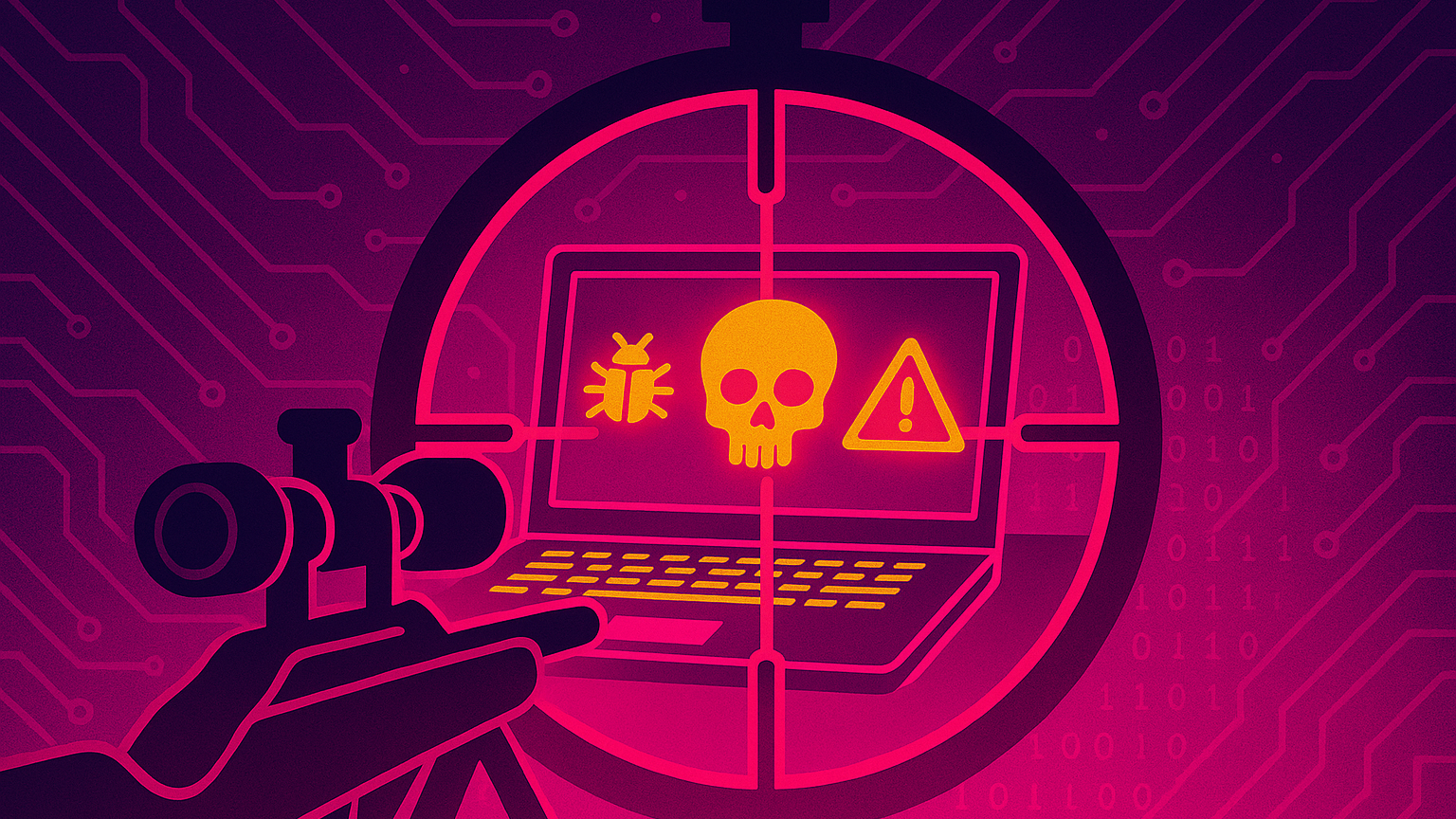
Real-World Example: The Terrapin Attack on SSH
The “Terrapin Attack” discovered in late 2023 exposed a flaw in SSH implementations that allowed downgrade and sequence number manipulation attacks. According to reports, millions of SSH servers worldwide were vulnerable. Although patches have been issued, many servers remained exposed for months. It demonstrates how even foundational protocols like SSH can become weak links if not properly maintained and monitored.
Our Cybersecurity Guarantee
“At Fusion Cyber Group, we align our interests with yours.“
Unlike many providers who profit from lengthy, expensive breach clean-ups, our goal is simple: stop threats before they start and stand with you if one ever gets through.
That’s why we offer a cybersecurity guarantee: in the very unlikely event that a breach gets through our multi-layered, 24/7 monitored defenses, we will handle all:
threat containment,
incident response,
remediation,
eradication,
and business recovery—at no cost to you.
Ready to strengthen your cybersecurity defenses? Contact us today for your FREE network assessment and take the first step towards safeguarding your business from cyber threats!









